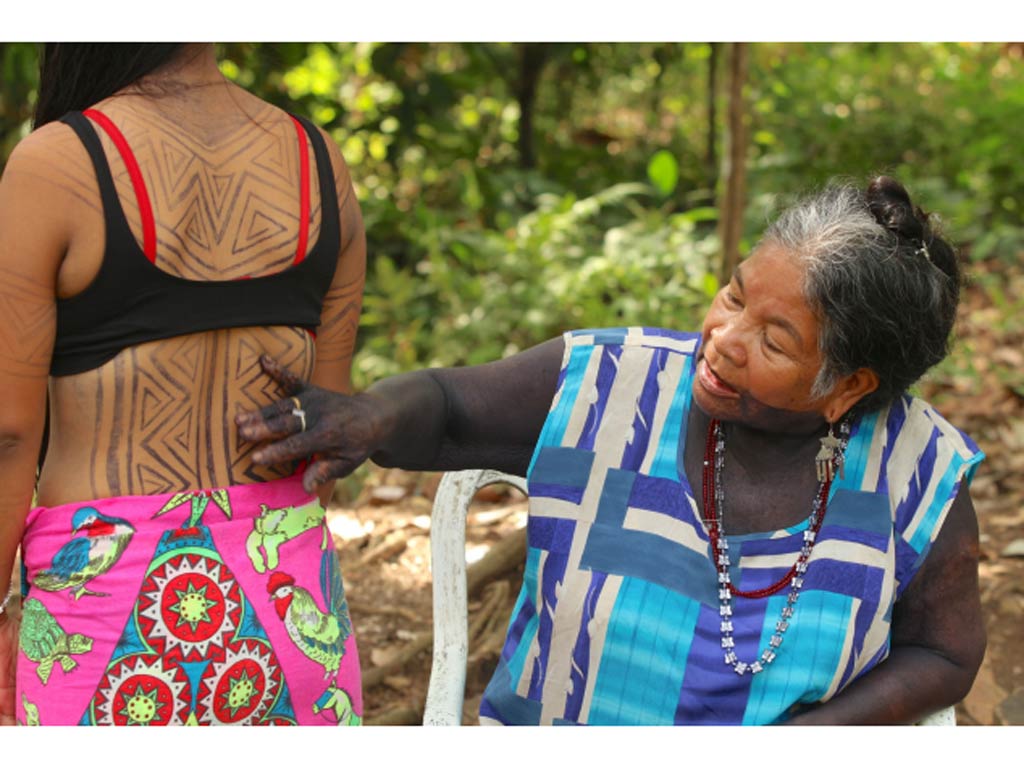All these expressions are based on ancestral stories and traditions which carry a thoughtful message, as it occurs with the body paints of the emberá and wounaan, or the chants and dances of the Ngabé Buglé.
For example, the emberá’s and wounaan’s paint is obtained from the kipara (“jagua”), the fruit of the namesake tree (Genipa americana).
The plant is used in different areas: medicine, celebrations and rituals, with different meanings and symbols; it’s sacred to the communities, and even a spirit protects it.
For that reason, before cutting a fruit, the area’s natives, out of respect for what they have, ask the tree for permission and even speak with it so that the spirit won’t harm them.
The body paintings last from eight to 12 days, according to the state of the skin at the time in which it is drawn, and designs refer to birds, mountains, rivers or wild animals, such as the tiger.
They represent geometric or leaf shapes, creeping plants and other inspirational elements that show the way in which indigenous people are linked to nature.
Many of the lines are messages, such as where the emberá comes from, if the woman is single or married, or if the drawing that the person carries is for protection, strength in health or when facing problems and challenges.
For its part, the Ngabé Buglé culture is characterized by the Ka chant, which is generally performed with nasal and guttural sounds in special events, rituals and festivities. In that way, the region’s autochthonous peoples express their experiences and communication with Mother Earth, the universe and human life stages; they thank and pay homage to corn, rice or bean crops, among others.
The chant comes with the playing of handmade maracas. As a rule, the main chant performer is supported by four apprentices, who repeat the choruses.
This moment is preceded by traditional dances, with which they celebrate the birth of new community members or express their gratitude to nature for a good harvest.
Taken from Orbe
By Mario Hubert Garrido, Chief Correspondent/Panama City
jg









